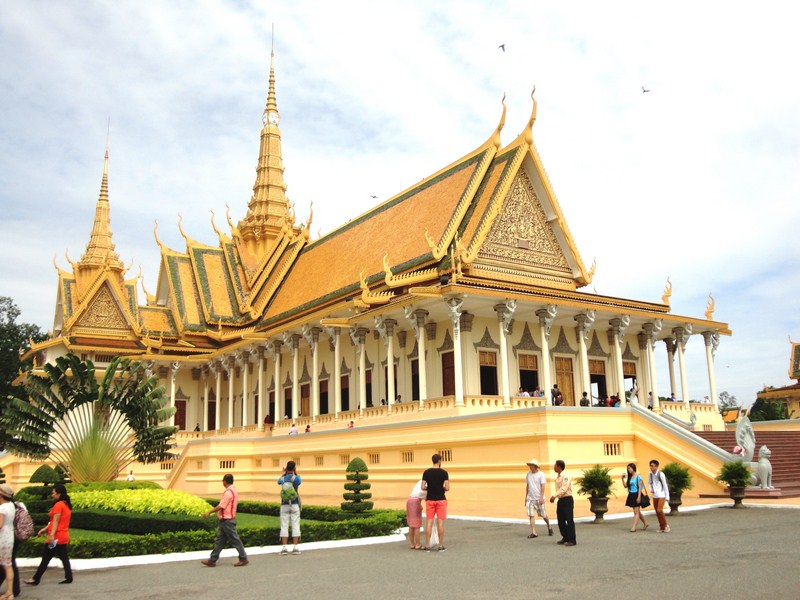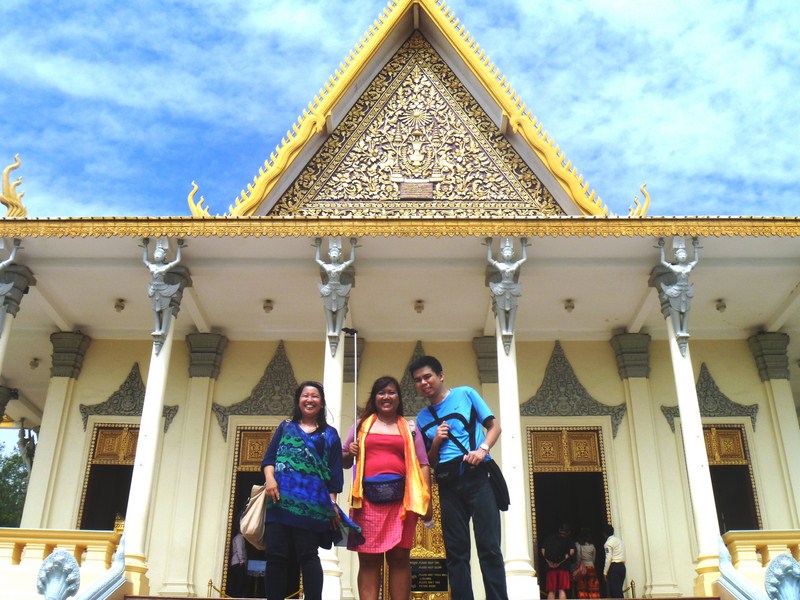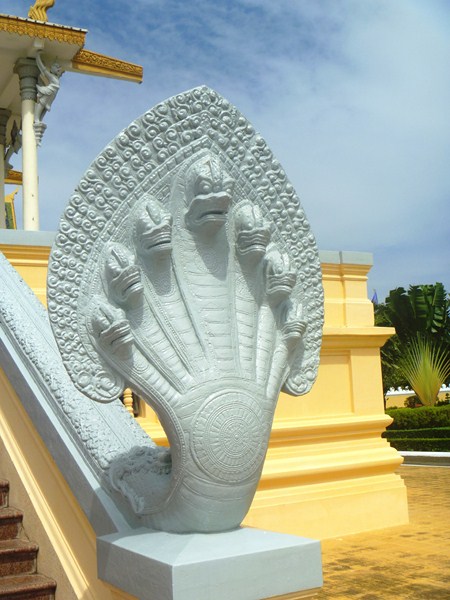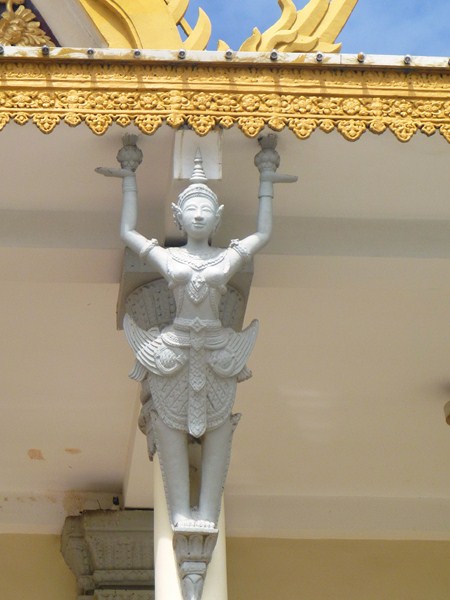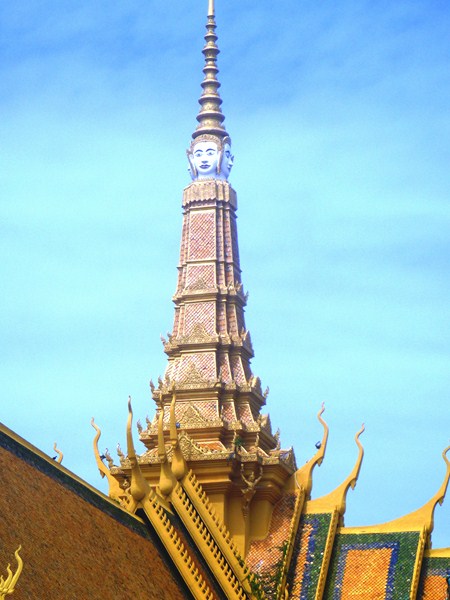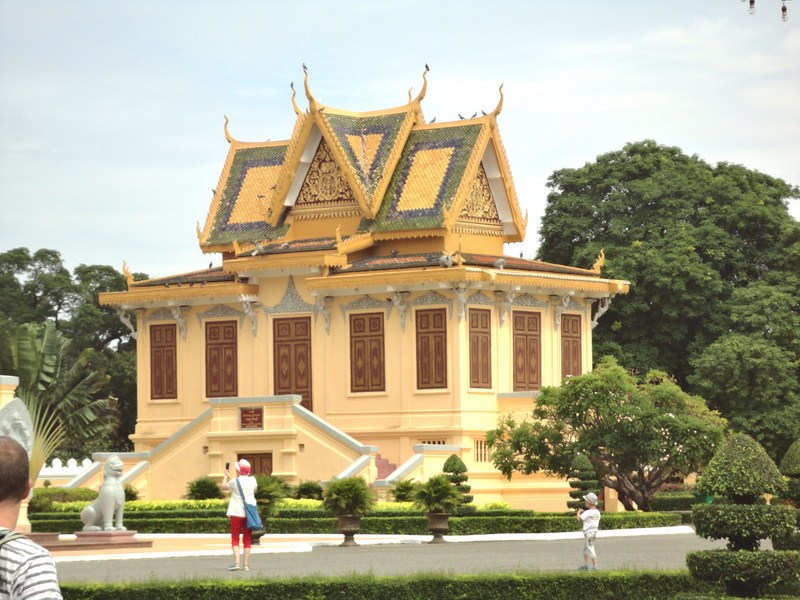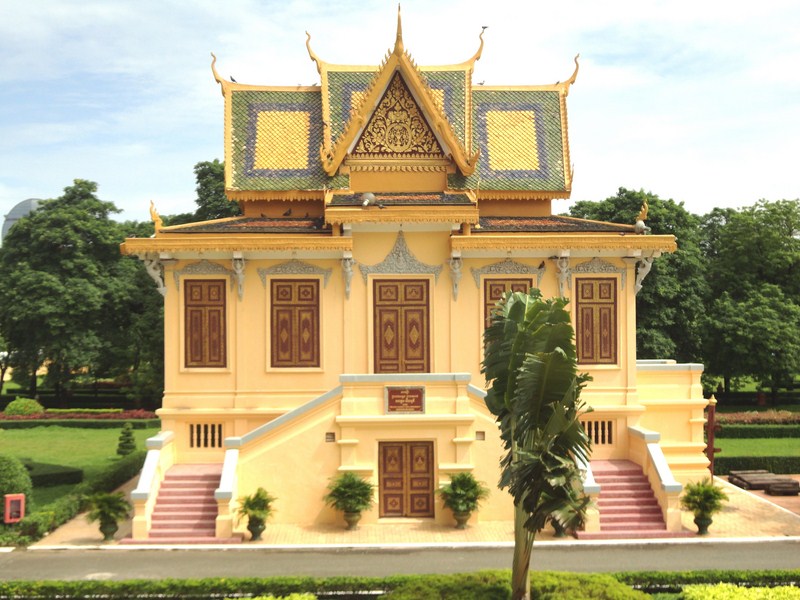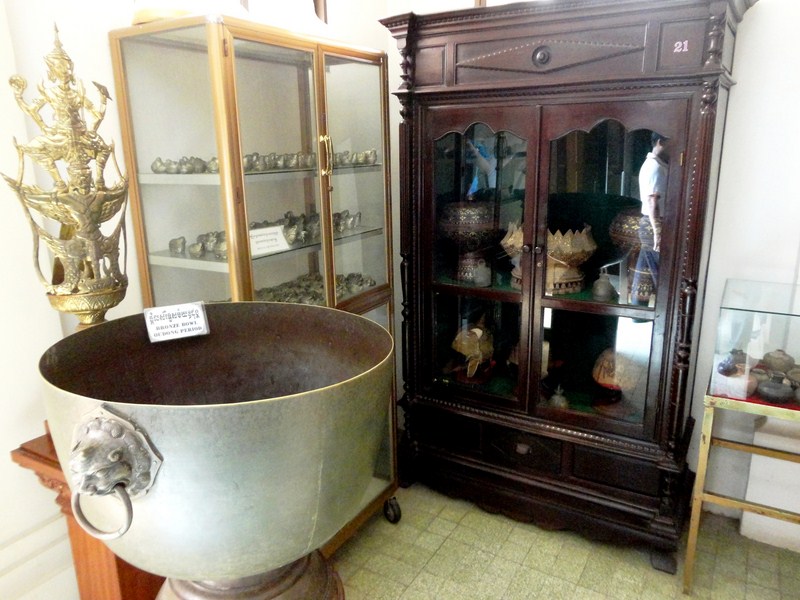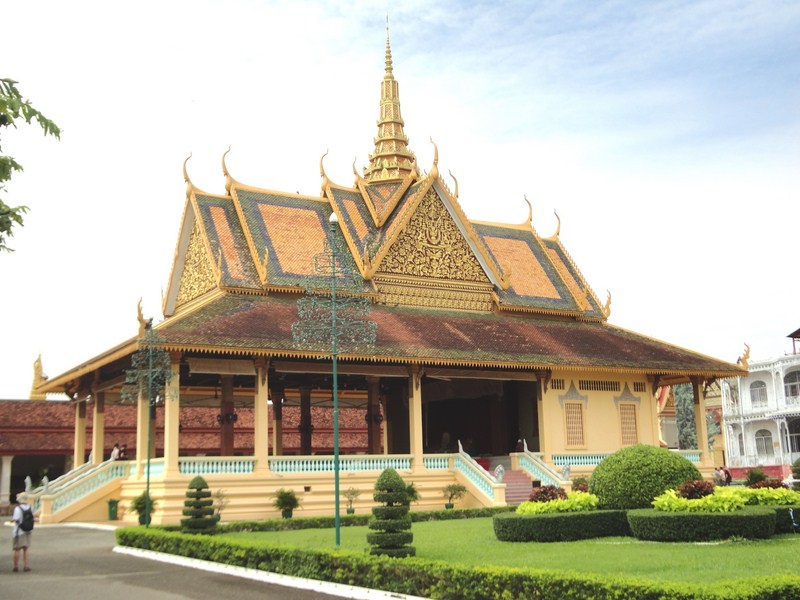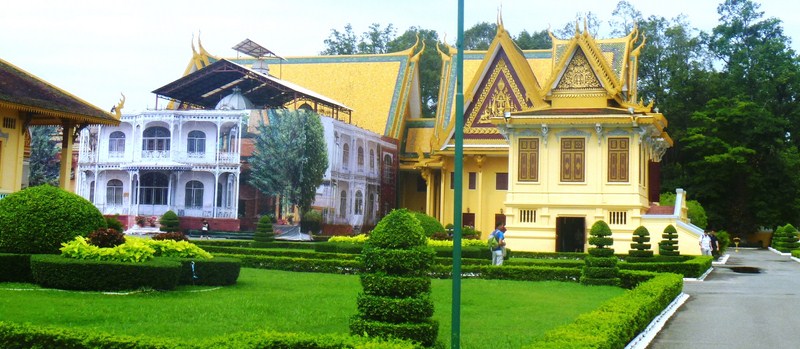Upon paying the admission fee of US$6.25, Jandy, Osang, Violet and I started our guide-less tour of the Royal Palace grounds.The first major building we passed was the open-sided Preah Tineang Phhochani, the banqueting and dance hall, inaugurated in 1912. The pristine gardens of the palace grounds are dotted with topiaried trees and are planted with tropical flowers and plants such as Allamanda cathartica, Couroupita guianensis and Jatropha integerrima.
We started with the cross-shaped Throne Hall (Preah Thineang Dheva Vinnichay Mohai Moha Prasat, or “Sacred Seat of Judgement”), the most impressive building in the royal compound. The Throne Hall , crowned with 3 spires, is the second building to be built on this site. The King’s confidants, generals and royal officials once carried out their duties here and it is still in use today as a place for religious and royal ceremonies (such as coronations and royal weddings) as well as a meeting place for the King’s guests.
The first building was constructed of wood in 1869-1870, under King Norodom, then demolished in 1915 and the present 30 x 60 m. building, a faithful reproduction of Norodom’s wooden palace, was built in 1917 and inaugurated by King Bat Sisowath in 1919. This building, as well as all buildings and structures at the Royal Palace, faces the east (best photographed in the morning). The building’s central, 59 m. high spire is topped with the white, 4-faced head of Brahma.
Inside are 3 royal thrones (2 traditional and 1 Western-style) and golden busts of Cambodians kings and queens, starting from the reign King Ang Doung onwards. However, we, as well as all other visitors, weren’t allowed to go inside, much less take pictures of the interiors, even from the outside. We could only take photographs of its exterior.
The hall’s broad and grand entrance stairway has banisters formed by 7-headed nagas. Each column of the colonnaded veranda is topped by a garuda with outstretched wings, all seemingly supporting the eaves of the roof.
To the right of the Throne Hall is the Hor Samran Phirum, the Royal Rest House, built between 1915 and 1917. It is not open for public viewing. On coronation day, this small pavilion is used as a royal rest house and waiting area. Here, the incoming King and Queen wait for their elephants to be bought around. On one side of the building is a door and some posts which are used to harness the elephants while the royals board. The king no longer keeps elephants and, today, this building is used to house gifts from foreign dignitaries as well as the royal musical instruments and utensils used in royal coronation processions.
One small but elaborate pavilion we could photograph, both inside and out, was the Hor Samrit Vimean, also known as the Bronze Palace. The Royal treasury, this tall but narrow building houses regalia vital to the coronation ceremony including the Great Crown of Victory; The Great White umbrella of state; The Sacred Sword; The Victory Spear; The Fan; various procession group figures bearing the national, religious and monarchy flags; and clothing worn during King Sihamoni’s coronation on October 2004. We joined other tourists at the small display room at the lower floor where we observed, and photographed, display cases exhibiting some of the more minor royal regalia and utensils. At the rear, we note the 7 mannequins wearing seven days’ worth of colors.
Just north of the Preah Tineang Phhochani, the palace grounds are closed to visitors so we could only observe the other buildings beyond from afar. Getting a much-needed facelift and shielded by a huge tarpaulin (with the actual likeness of the building inside) during our visit was the cast-iron, French-style Pavilion of Napoleon lll, the oldest surviving structure on the palace grounds. It was presented by French Emperor Napoleon III to King Norodom in 1876 and re-erected here. The pavilion was used by the Empress Eugenie (Napoleon’s wife) during her inauguration of the Suez Canal in in Ismailia, Egypt in 1869. It now serves as a museum of royal memorabilia and a photo exhibit of former Cambodian kings.
West of the pavilion is the Preah Reach Damnak Chan. Built in 1953, it’s partly a museum housing a collection of gifts to the royal family while another part is an office for the Ministry of the Royal Palace. Just past the Pavilion of Napoleon III, a gateway provided us access to the Silver Pagoda.
Royal Palace: Samdach Sothearos Blvd., Phnom Penh. Open daily, 8 to 11 AM and 2 to 5 PM.

